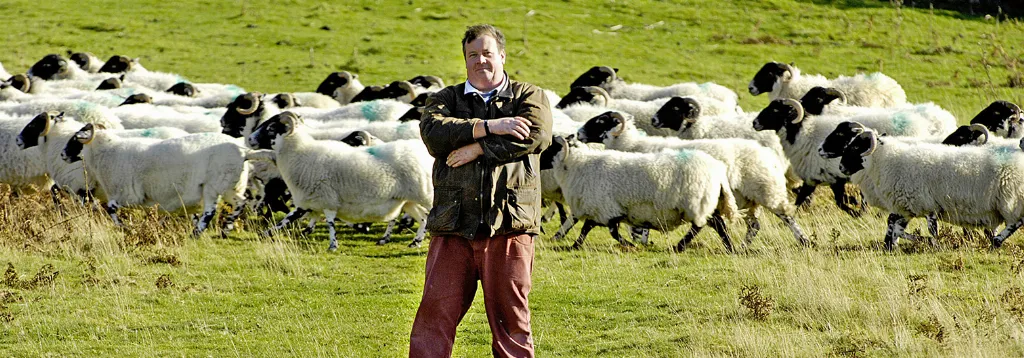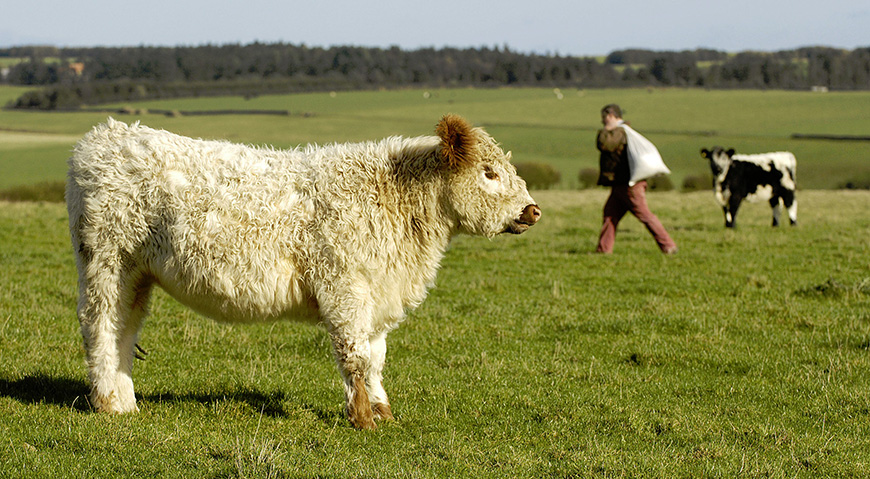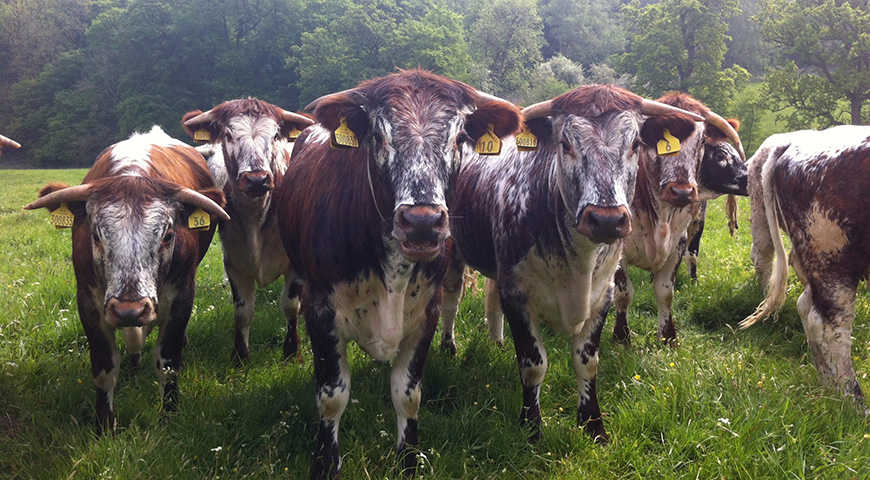The Ginger Pig interview
Tim Wilson, owner of The Ginger Pig, one of the country’s most respected butchery businesses, reflects on the coming of age of an icon
Words: Clare Finney
Once upon a time—21 years ago, to be precise—there were three large pigs living at home with Tim Wilson, an antiques dealer, in the heart of rural Nottinghamshire. He had bought them for company, having discovered the picturesque medieval farmhouse he’d moved into simply didn’t feel right without animals roaming around outside.
“When we moved in, the sty was just a broken down gate and a shed with no roof—it was horrible,” says Tim. “So I bought some pigs. I didn’t buy them to eat. I just bought them to fill the place.” It was a retired pork butcher who in passing told Tim his purebred Tamworths needed slaughtering “or they’ll start shagging each other. And by the looks of it they’re siblings.”
“He butchered them for me and I gave bits to friends and family, but I had loads left over, so I started making sausages,” Tim continues. He learnt the art of sausage-making from a Liverpudlian butcher, who taught him in exchange for Tim writing off a sizeable debt.
When word got round the village that he was selling them (he wasn’t), he started a tiny Saturday farm shop. A lady called Henrietta Green called, asking if he’d like to come to a food fair in Borough, London. Spontaneity isn’t his forte, and it was still “just a hobby, really. But the girls working with me insisted. They loaded up the van and drove down Thursday night.”
A grubby van
At 10am on Friday he received a phone call. “They’d sold everything.” Yes, Tim was just selling sausages and bacon from “a polystyrene box out the back of a grubby van”, but these were sausages and bacon like no one in London had seen or tasted for a very long time: homemade, richly-flavoured, and made with real, fresh meat from happy, well looked-after, purebred pigs.
Each weekend Tim drove down to Borough, driving back up north the next day. “I started at the Market at half three on a Saturday morning. There were foxes running around, and if you left your eggs out they’d take them and hide them in sacks of potatoes.”
It wasn’t easy. Indeed, for all his remarkable success, it still isn’t. The Ginger Pig is now based upon more than 3,000 acres of pasture and moorland in North Yorkshire. Yet when we ask Tim if he ever felt like giving up on his pig project and returning to the antiques business he started out in, he is unhesitating.
“The food market is a doddle compared to the antique business. Sell a man a nice chair, and you won’t sell him one next week.” Sell him a good rasher of bacon and you’ll have yourself a weekly customer—one who will, if properly looked after, go on to buy not just bacon, but cuts he’d have balked at previously.
A re-education
“In the early days some people would say, ‘I’m not sure about a pork chop with that much fat on it.’ I’d say, ‘I’ll sell you this chop for £2 instead of £2.80, but cook with the fat on and see what you think.’ It was a re-education. But at a time when people were up for it, it was easy.”
Butchers were a dying breed, mass production ruled and the public idea of meat had very much been shaped by supermarkets: cheap, imported, poor quality and pumped with hormones and water. The vastly superior meat The Ginger Pig sold spoke for itself.
“When we make a sausage roll, we do a big sausage roll: none of this all-pastry, no-meat stuff. If you do bacon, make it flavour first: the reason supermarkets can sell it so low is because it’s all water.”
Back when The Ginger Pig opened the doors to its Moxon Street shop the people of Marylebone were not as clued up on food as they are now. “They weren’t foodies. Not back then,” grins Tim, recalling the time a well-heeled woman came in and demanded a chicken breast.
A butcher’s block
“I’d taken to Moxon Street the same approach I had at Borough: no counter, just a butcher’s block and the carcasses. I took a chicken, put it on the block, and she said, ‘What are you doing?’ I said, ‘Cutting the breast off’ and she said, ‘What, now? Oh I can’t!’ She walked out as I pointed out it was already dead,” he shrugs.
It seems hard to believe now that the Moxon Street branch is one of Marylebone’s most famous shops and the most popular of The Ginger Pig’s branches, but it took “some time for us to really settle in”.
Part of the problem was the deep and intractable suspicion of south London demonstrated by those in the more northerly boroughs. “They’d say, ‘are you new?’ And I’d say yes, though we’ve a branch in Borough Market, south of the river. They’d frown. ‘I don’t go there.’ It was peculiar,” he continues.
Mercifully there were a handful of brave souls prepared to make the leap over the river, or The Ginger Pig might never have got here. “There was a customer who used to come to the market, and he said I’d do well in Marylebone. Then there was a food writer called Jenny Linford, who said the same thing. And so I came along here and talked to Patricia at La Fromagerie.”
Hardened chef
She told him to pay a visit to the Howard de Walden Estate. They’d been expecting him—or rather, they were going to ring him anyway, they explained. “We’d love a butcher, and there’s a space that’s perfect.” Then the Fergus Henderson-hardened chef Paul Hughes came along, and things started falling into place.
And by place, we mean pastry: it was Paul whose expertise gave birth to the now legendary pies, sausage rolls, black puddings and terrines. “He was a proper chef, but my word he was messy. Too messy. I had to employ someone just to clean up after him.” The ‘kitchen porter’, as he was officially known, was Tom Pasternak, now responsible for running The Ginger Pig’s London shops.
Next year, the bakery currently based on the farm up north will move to London to further improve the freshness of our favourite treats. A restaurant will come with it, boasting slow roasts and a cookery school. Is Tim surprised by how far the business has come in 21 years?
“Only in the last five years have I really thought about it as a proper business, with development. I’ve been full-time feeding pigs, doing what needed to be done rather than planning,” he muses. “We’ve lived by the skin of our teeth.”
Artisan butchers
He’s proud of the way they’ve changed the industry, inspiring sustainable farming practices and artisan butchers. But he’s most proud of his staff: “People like Tom, who does so much. Once he couldn’t speak English. Now he’s fluent, married with kids,” Tim beams.
“I’m barely needed these days. Everyone in the office, everyone at the farm, the butchers…” he trails off proudly. “That’s what’s made The Ginger Pig, really. I just had the idea.”






